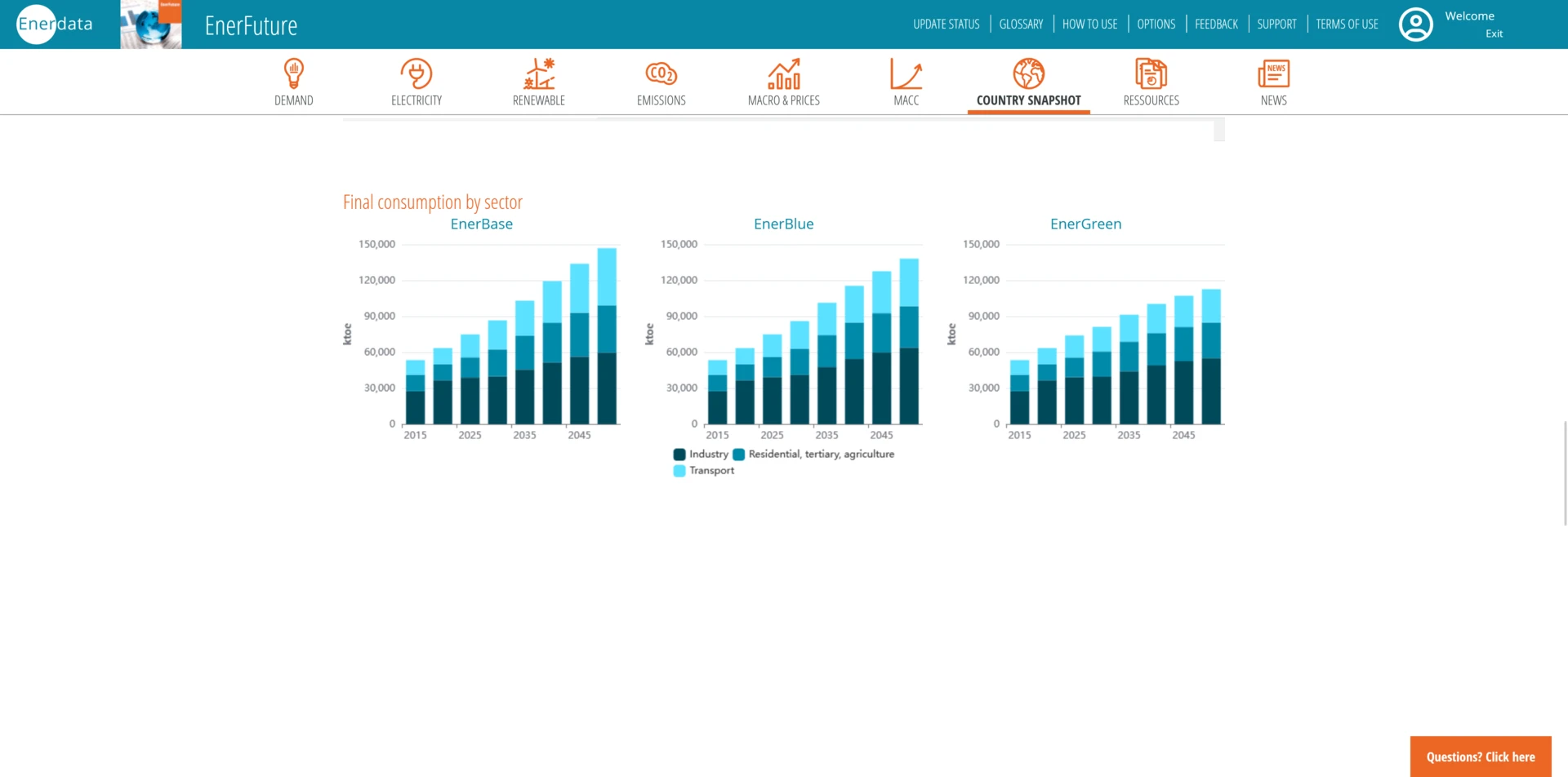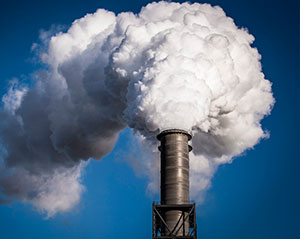More projections
The series contained in this interface are a short excerpt of the data available in Enerdata‘s EnerFuture service. The complete service provides:
- Many other series including end-user prices, electricity generation and capacities by energy source, etc.
- Extended global coverage including 65+ individual countries and regional aggregates.
- Additional scenarios: whereas the data in EnerOutlook corresponds to the EnerBlue scenario (NDC achievement), two other scenarios are provided in EnerFuture: EnerBase (current policies) and EnerGreen (2°C scenario).
- Detailed breakdown: insightful details are provided in EnerFuture, such as a complete disaggregation of all series by country, by sector and by energy source/vector; e.g. final consumption of gas in the US buildings sector, electricity price in the Chinese industry, solar capacity for power generation in India, CO2 emissions from the industry in Europe and by Member State, etc.
- Full MS-Excel export capability: EnerFuture allows the user to select customised sets of forecasts and export the selection into user-friendly MS-Excel sheets (sorted by series or by country), to facilitate further analysis.
- Further analytical indicators: including macroeconomic indicators (economic growth, population, GDP per capita), demand indicators (primary energy intensity, per capita energy and electricity consumption), CO2 indicators (emissions per inhabitant, CO2 intensity of power generation, carbon price, CO2 intensity to GDP), renewables indicators (share in primary and final consumption, share in electricity generation), and more
- Marginal Abatement Cost curves (MACCs): providing both the level of emissions and the level of mitigated/reduced emissions that can be reached at a selected carbon price in a given year, country and sector. These levels are derived from our explicitly detailed standard scenarios. MACCs are provided for a wide range of carbon prices.
- A Country Snapshot: select your countries of interest and explore the key trends of the future energy system through intuitive graphs and tables.
- A “Wedges” module: show a breakdown of the levers enabling to reduce emissions between two scenarios
EnerFuture previews


EnerFuture provides energy projections up to 2050. Our service offers clear insight into the future of energy demand, prices and GHG emissions.
More informationEnerdata's long-term MACC allow you to gain unique insight and comprehensive data from the globally recognised POLES model.
More information02
May
The Philippines’ Department of Energy (DOE) expects that nearly 4.2 GW of new power projects to be commissioned in 2024, mixing renewables and conventional sources. This includes the start of commercial operation of a record solar power capacity of nearly 2 GW (1,985 MW) that should be commissioned in 2024, and two large thermal power plants, namely the 1,320 MW (4x440 MW) Batangas CCGT power project and the 600 MW (4x150 MW) Mariveles coal-fired power project (unit 1 already operational and 3 other units under testing and commissioning). In addition, at least 590 MW of battery energy storage should be commissioned during the year.
30
Apr
The Russian Ministry of Economic Development has confirmed the official forecasts for gas production in Russia for the 2024-2027 period. Gas production in the country should reach 666.7 bcm in 2024, 695.4 bcm in 2025, 707.5 bcm in 2026 and 727.3 bcm in 2027. The ministry has also unveiled a conservative forecast alongside the baseline one, with production reaching 654 bcm in 2024 and potentially standing at 659 bcm for 2025, 666 bcm in 2026 and 671 bcm for 2027.
25
Apr
The Russian Ministry of Economic Development has lowered its forecasts for the country's crude oil export prices over the 2024-2027 period to US$65/bbl. The forecasts were cut from previous estimates of US$71.3/bbl for 2024, US$70.1/bbl for 2025 and US$70/bbl for 2026.
22
Apr
The European Union Agency for the Cooperation of Energy Regulators (ACER) has published its European LNG Market Monitoring Report (MMR). According to the report, the EU outpaced China as the largest global LNG importer in 2023, with 134 bcm of LNG imports recorded, while the United States have surpassed Qatar and Australia as the largest LNG producer, with an estimated export volume of 119 bcm in 2023. The EU’s increased demand of LNG may reach its peak during 2024 under ‘REPowerEU’ demand scenarios, at 330 bcm.



